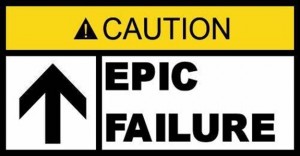

Last week I tried this trick that I read about on various marketing blogs and asked my little brother (a football fanatic), “Who were the main sponsors of the Football World Cup 2010?”. And to my surprise, he spitted out brands like Pepsi and Nike. If you readers too, agree with this answer, then I’m afraid all of you (and my littler brother) are under the spell of what’s called “ambush marketing”.
Pepsi and Nike are not the official sponsors of the Football World Cup 2010, i.e., they did not pay huge sums of money (like Adidas and Coca Cola) on buying these so called “exclusive rights” but yet was able to make itself look like was an “active participant” during the event.
In a more formalized sense, ambush marketing is an approach that companies use to carry out similar-themed campaigns in the time frame of a particular event without mentioning the event itself. The bold highlight is important because that is exactly what fuels the significance of the word, “ambush”. So, the similar theme for Pepsi and Nike’s case would be the World Cup (without specifically mentioning the word, ‘World Cup’) and they had their own respective campaigns (for Nike it was ‘Write the Future’ and as for Pepsi, it was body paint Football Stars)
The reason as to why I’m talking about this is that this fits well with what we’ve been discussing in class regarding “Marketing Ethics”. Did Pepsi and Nike do the “right thing” by achieving success through ambush marketing? Is it unfair from Adidas’ or Coca Cola’s perspective that they had to pay tons of money to be center stage of such a big event but yet Pepsi and Nike were able to get as much success without having to pay so much?
The issue of ethics doesn’t just lie under ambush marketing but is applicable everywhere. The issue of ethics can also be seen in my fellow classmate, Catherine Guan’s (https://blogs.ubc.ca/catherineguan) recent blog post where she talked about Benetton’s recent ad depicting famous world figures locking lips to apparently spread a message of “unity and tranquility”. Benetton is a company known for its “shock value” marketing to promote their line of clothing. The company definitely was able to garner attention its way with the release of these photos. In fact even I didn’t know about this company until the news of such ads flooded the media stream (so, it clearly worked Benetton’s way).
So, is it unfair from Adidas’ or Coca Cola’s perspective that they had to pay tons of money to be center stage of such a big event but yet Pepsi and Nike were able to get as much success without having to pay so much? How ethical was it for Benetton to post such an ad? It’s a tricky question to answer but I personally believe that such a question warrants a complicated reply since the situation and the context within which it lies, is in its own nature, quite complicated.













